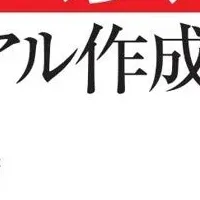
Business Leaders' Confidence in U.S. Economy Dips Amid Inflation and Tariff Concerns
Shifting Confidence Among U.S. Business Executives
A recent survey by AICPA & CIMA highlights a noticeable drop in the confidence of U.S. business executives regarding the economic outlook, plummeting from a three-year peak of 67% to just 47%. This decline marks the end of a post-election surge in optimism, shedding light on how external economic factors are impacting business planning and confidence.
The survey, targeting CEOs, CFOs, controllers, and other high-ranking accountants within U.S. companies, indicates that the primary culprits for this shift include ongoing inflation concerns and the uncertainty posed by tariffs. Interestingly, although the tariffs considered in the survey were not yet imposed at the time of the responses, 59% of participants anticipated a negative effect from their implementation. Additionally, a significant 85% admitted that uncertainties surrounding tariffs had a discernible impact on their business strategies, with 18% characterizing this impact as significant.
Economic factors have influenced businesses significantly in recent months, with inflation taking the forefront as executives’ main worry. Closely following are staffing issues, including employee benefits costs, the availability of skilled personnel, and staff turnover. Political leadership, which was not rated as a primary concern in the previous quarter, notably reappeared on the list, highlighting its importance in guiding industry direction.
Tom Hood, executive vice president for business engagement at AICPA & CIMA, stated, "There are several warning signs currently evident for business executives, particularly regarding inflation and payroll costs. Consumer confidence is also becoming increasingly shaky, which, when combined with potential tariffs, adds another layer of uncertainty.”
Despite these concerns, the outlook for economic growth in the broader sense still holds relative strength. The figures indicate that economic optimism remains higher than it has been since mid-2021, stirring some hope amidst rising worries. Furthermore, the plans for business expansion—though unchanged from the last quarter—show that a majority of executives, about 57%, are still poised for growth within the coming year.
Key Survey Findings and Implications
- - Internal Optimism Lowered: The percentage of executives who are optimistic about their own organizations has dipped slightly from 53% to 50% over the last quarter.
- - Revenue and Profit Expectations: Projections for revenue growth eased from 3.3% to an anticipated 3%, while profit expectations dropped from 2.2% to 2%. These adjustments signal a cautious approach from businesses expecting potential economic slowdowns.
- - Hiring Stability: Approximately 39% of business leaders reported a shortage of employees, which is a slight increase compared to the previous quarter. Importantly, one in five executives is looking to hire immediately, maintaining stability in the job market.
This survey serves as a forward-looking metric of hiring and business expectations for the year ahead, contrasting with external reports like the U.S. Department of Labor’s employment data, which reflects past hiring trends. Conducted between February 4 and 26, 2025, the survey garnered 305 responses from qualified participants, with a margin of error less than 3 percentage points.
Conclusion
The recent findings from AICPA & CIMA's Economic Outlook Survey reveal a substantial shift in the landscape for U.S. business leaders as they navigate future uncertainties. The interplay between inflation, tariffs, and internal business health presents a complex challenge, requiring executives to remain flexible and proactive in their strategic planning. As they look ahead, maintaining a delicate balance between optimism and caution will be key to navigating this fluctuating economic landscape.
Topics Business Technology)










【About Using Articles】
You can freely use the title and article content by linking to the page where the article is posted.
※ Images cannot be used.
【About Links】
Links are free to use.